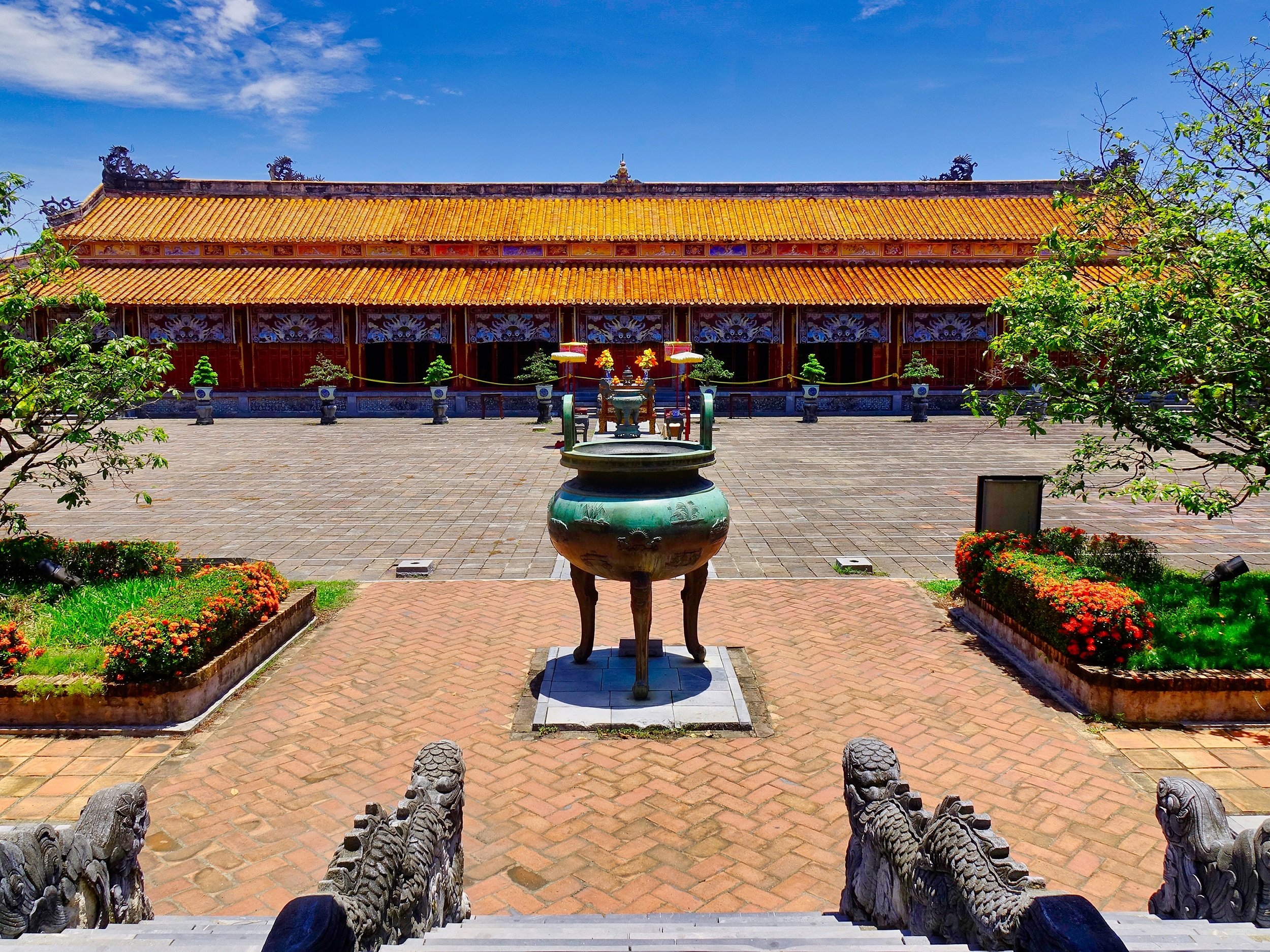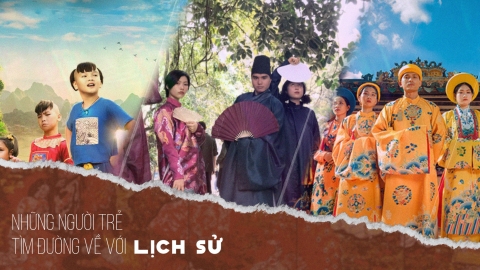Concept and manufacturing process
King Minh Mang - the second king of the Nguyen Dynasty - according to historical records, from a young age loved classical literature and was passionate about tradition. He was a king with Confucian ideology. After ascending the throne and completing the unfinished construction of the Imperial City of his father King Gia Long, King Minh Mang wanted to learn from the ancients and cast the Nine Tripod Cauldrons to affirm the authority of the dynasty.
BookDai Nam Thuc Luc Chinh BienIt is said that in the winter, October, year At Vi (At Mui - 1835), King Minh Mang issued an edict to cast the Nine Tripods for his Nguyen Dynasty. The edict stated: “The tripods are to show that the throne is correct, the name and destiny have gathered. They are truly precious objects in the ancestral temple. In the past, the wise kings of the Three Dynasties used the metal offered by the mandarins of the nine provinces to cast nine tripods as treasures to pass down to future generations. That ceremonial rule was truly great! I respectfully followed the previous generation's example, following the clear path. Now I want to follow the ancient tradition, casting nine tripods to place in the The Mieu temple... That is to express the wish for a long lasting legacy, passed down to future generations. Assigning the mandarins the tasks according to the newly established model to cast.”The Three Dynastieshere refers to the Xia, Shang, and Zhou dynasties in ancient China.
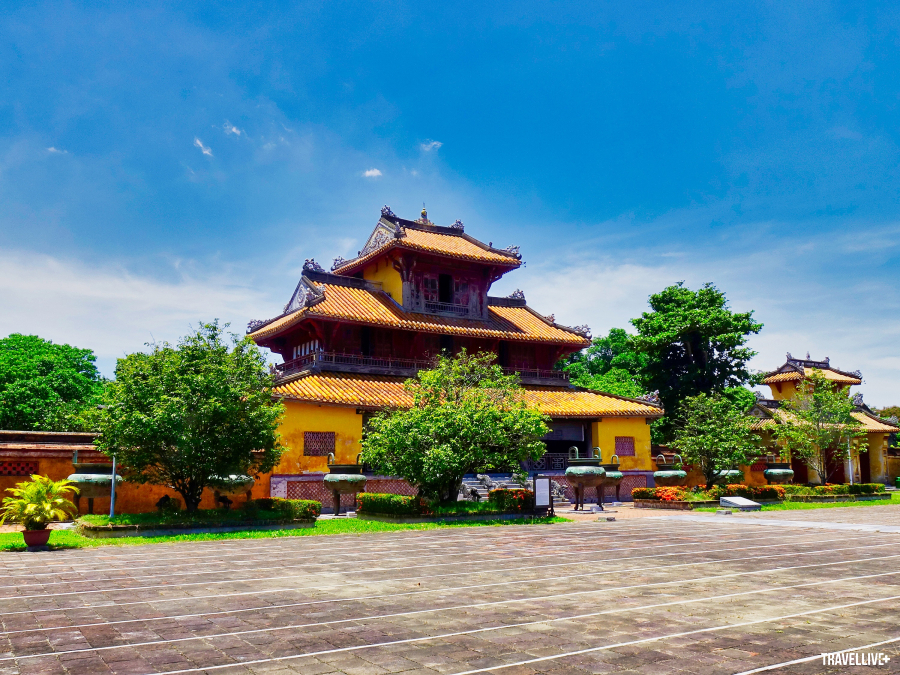
Nine Tripods in front of The Mieu Temple
The Nine Tripods were started at the end of 1835 (October of At Mui, from November 20 to December 19, 1835) and inaugurated on March 1, 1837, but in reality the work of making the Nine Tripods was divided into two stages. The casting of the nine tripods began at the end of 1835 (the 16th year of Minh Mang's reign) and was completed in June 1836 (the 17th year of Minh Mang's reign). Then came the stage of repairing, carving, and re-engraved the images on the body of the Nine Tripods in detail - this work lasted until March 1837.
Some features of the Nine Tripod Cauldrons
Although the 9 cauldrons have a relatively similar general shape: 3 legs, round body, narrow neck, flared mouth and 2 handles, each cauldron actually has its own unique features.
Regarding the straps, the Cao, Nhan, Du and Huyen peaks have a pair of square straps. However, the Cao peak's strap pair is slightly curved and not square like the other three peaks. Meanwhile, the Chuong, Anh, Nghi, Thuan and Tuyen peaks have a pair of U-shaped straps with two rounded corners, but they also have differences: the Chuong - Nghi peak's strap has a round cross-section; the Anh peak's strap has a square cross-section; the Thuan peak's strap is braided rope-shaped; the Tuyen peak's strap has a round cross-section but has a longitudinal ridge. The peak mouths of the Thuan peak, Du peak and Huyen peak are curved with a cross-section of ¼ of a circle, while the other peaks have a round cylindrical mouth with a square ridge on the outside.

Some details differ between the peaks in terms of the strap, neck and peak mouth.
Regarding the urns, only Cao Dinh and Du Dinh have straight necks, the remaining urns all have curved trough-shaped necks. The bases of the urns are also different. Nhan Dinh, Nghi Dinh, Tuyen Dinh, and Huyen Dinh have relatively flat bases - in which the base of Nghi Dinh is slightly convex on the inside - the remaining urns have curved bases with spherical tops. The legs of all urns are slightly curved, except Du Dinh which has straight legs.
On the body of each cauldron are carved 17 images of the universe, mountains, rivers, birds, animals, products, weapons..., forming a panoramic picture of the unified Vietnam during the Nguyen Dynasty.
The weight of the urns ranges from 3,200 pounds (1,935 kg) of the lightest one, Huyen Dinh, to 4,307 pounds (2,601 kg) of the heaviest one, Cao Dinh. The height (to the mouth of the urn) is around 1.9 m - 2 m, of which the highest is Cao Dinh (2.02 m) and the lowest is Anh Dinh (1.83 m).
Location of the Nine Tripod Cauldrons
The nine urns are placed in front of The Mieu Temple yard, right behind Hien Lam Pavilion. The Cao urns are in the middle, 3 meters higher than the other urns, on the sacred axis running from Hien Lam Pavilion to the middle room of The Mieu Temple - where the altar of King Gia Long is located - to honor the king who founded the Nguyen Dynasty. The Cao urns symbolize greatness.
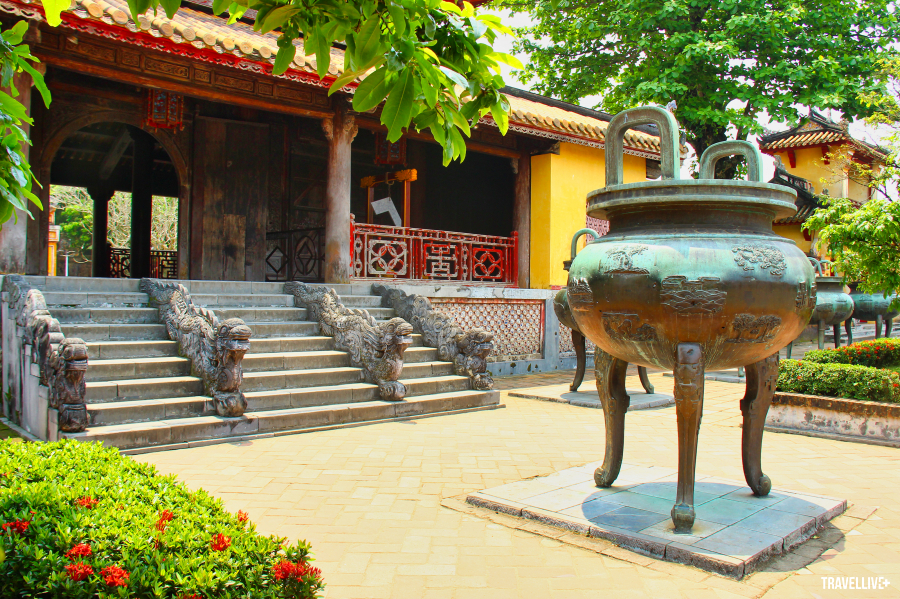
The top is placed in the middle, about 3 m forward compared to the other tops.
Looking out from The Mieu Temple, on the left of Cao Dinh are Nhan Dinh, Anh Dinh, Thuan Dinh, and Du Dinh; on the right are Chuong Dinh, Nghi Dinh, Tuyen Dinh, and Huyen Dinh.
Nhan Dinh is opposite the altar of King Minh Mang, Chuong Dinh is opposite the altar of King Thieu Tri, Anh Dinh is opposite the altar of King Tu Duc, Nghi Dinh is opposite the altar of King Kien Phuc, Thuan Dinh is opposite the altar of King Dong Khanh, Tuyen Dinh is opposite the altar of King Khai Dinh, Du Dinh is opposite the altar of King Ham Nghi, Huyen Dinh is opposite the altar of King Duy Tan.
The meaning of the Nine Tripod Cauldrons
BookDai Nam Thuc Luc Chinh Bien, Second PeriodIt is said that in the year of Dinh Dau, the 18th year of Minh Mang's reign, in the spring, January, on the day of Quy Mao (March 1, 1837), the nine urns were placed in rows in the yard of The Mieu. The book says: "It was completed within a year. The order was given to the authorities to choose an auspicious day to place the urns after they had bathed and cleaned themselves (the foundation was made of stone blocks)". On the day of the great ceremony to place the urns, King Minh Mang himself directly presided over the worship ceremony at The Mieu.
It can be seen that King Minh Mang highly valued the Nine Tripods. For the king, the king's authority was entrusted by Heaven to one person (the king) to rule the people. The urns facing the sky were to receive that entrustment - so the body of the urns had to be large and wide. The urns, therefore, symbolized the king's legitimate power.
Therefore, before placing the urns in The Mieu Temple, the king requested that the urns be “cleaned thoroughly”. Even after the rough casting was completed, the king also held a thanksgiving ceremony. When placing the urns, King Minh Mang wanted the urns to have a very solid base so that they would not be shaken at all, because it symbolized the stability and stability of the throne. Therefore, the base of the Nine Urns was made of solid stone.
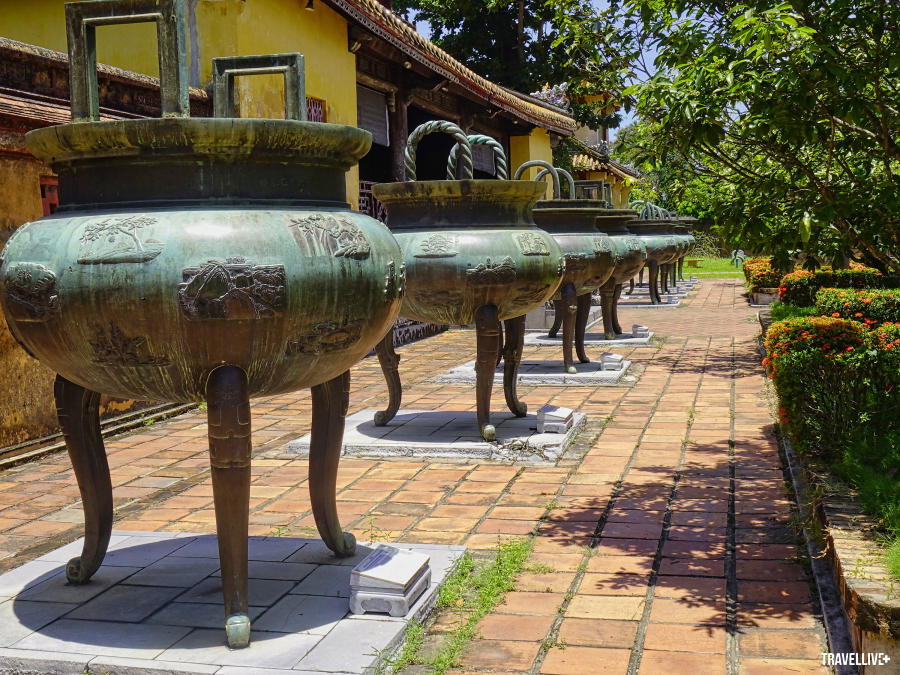
The nine tripods are placed right behind Hien Lam Pavilion, in front of The Mieu Temple yard.
With the function of being a treasure symbolizing the sustainability of the Nguyen Dynasty, King Minh Mang had a meaningful meaning when naming the urns. Later, the posthumous names of the Nguyen kings were all named after the urns.
Cao Dinh is the posthumous name of King Gia Long, Nhan Dinh is the posthumous name of King Minh Mang, Chuong Dinh is the posthumous name of King Thieu Tri, Anh Dinh is the posthumous name of King Tu Duc, Nghi Dinh is the posthumous name of King Kien Phuc, Thuan Dinh is the posthumous name of King Dong Khanh, Tuyen Dinh is the posthumous name of King Khai Dinh.
Kings Duc Duc and Hiep Hoa were deposed and killed; King Ham Nghi and his son, King Thanh Thai and Duy Tan, fought against the French, were deposed and exiled; King Bao Dai abdicated... and were not given a temple name or posthumous name. Therefore, Du Dinh and Huyen Dinh did not become the posthumous names of any king.

From Hien Lam Pavilion looking towards Cao Dinh and The Mieu
The Nine Tripod Cauldrons - in addition to expressing the dreams of King Minh Mang and the Nguyen kings about the sustainability and power of the Nguyen Dynasty - are also excellent works of art by ancient artisans.
Fortunately, over the past 200 years, through many wars and natural disasters, the Nine Dynastic Urns have remained intact in their original position and have become a rare and valuable cultural heritage of Hue as well as Vietnam.






